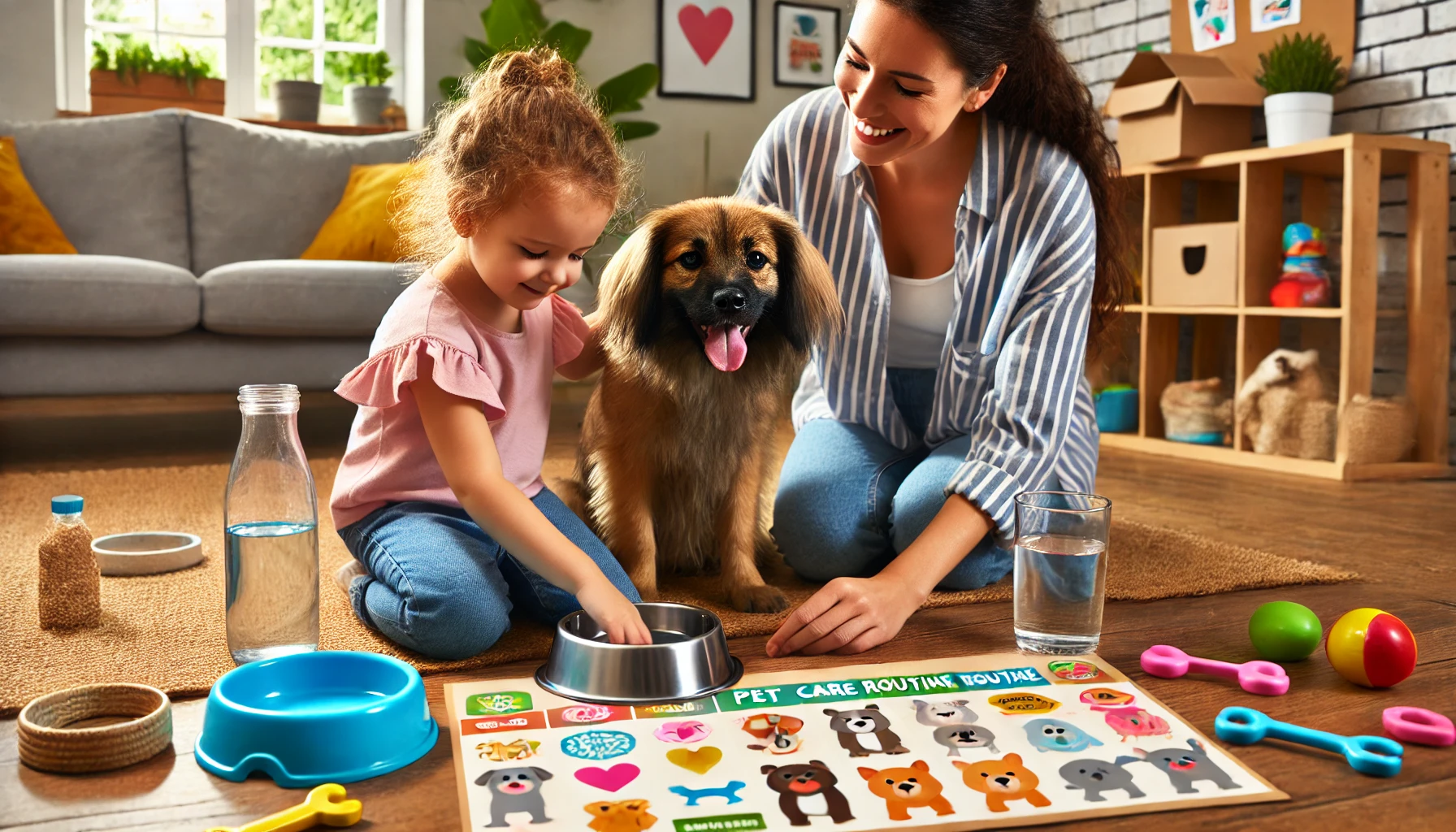How to Teach Young Children About Caring for Pets
Caring for pets is a wonderful way to teach young children about responsibility, empathy, and kindness. Whether it’s a dog, cat, fish, or hamster, pets rely on their human families for love and care. By involving children in age-appropriate pet care tasks, we help them build important life skills while strengthening their bond with their furry (or scaly) friends.
Why Teaching Pet Care Matters
- Builds responsibility and routine
- Fosters empathy and compassion
- Teaches respect for living beings
- Develops observation and problem-solving skills
- Strengthens family bonds with shared tasks
1. Start with Simple Pet Care Tasks
Children feel proud when they can help.
Activity Idea:
- Assign safe, easy tasks like filling the water bowl or brushing the pet.
- Supervise tasks like feeding and explain quantities.
- Celebrate their participation: “Your care is keeping our pet happy!”
What Kids Learn:
- Daily responsibility.
- How pets depend on them.
- Pride in contributing to family care.
2. Teach Gentle Touch and Respectful Handling
Pets need kindness, too.
Activity Idea:
- Practice soft petting: “Use gentle hands, like you’re touching a feather.”
- Role-play with stuffed animals to demonstrate safe handling.
- Show signs of pet discomfort: “When the dog moves away, it means they need space.”
What Kids Learn:
- Respect for animals’ feelings and boundaries.
- Safe interactions with pets.
- Empathy for their pet’s needs.
3. Create a Pet Care Routine Chart
Visual aids help children remember their responsibilities.
Activity Idea:
- Make a colorful chart with daily pet care tasks and stickers.
- Let your child mark off tasks they complete.
- Review the chart together each evening.
What Kids Learn:
- Consistency and routine.
- Time management and responsibility.
- Visual tracking of their contributions.
4. Read Books About Caring for Animals
Stories bring lessons to life.
Activity Idea:
- Read books like Harry the Dirty Dog or What Pet Should I Get? by Dr. Seuss.
- Ask: “What does the character do to care for their pet?”
- Draw pictures of your child helping their pet, inspired by the story.
What Kids Learn:
- Emotional connection to pet care.
- New vocabulary and concepts.
- Inspiration for caring behavior.
5. Involve Children in Veterinary Visits
Teach that health care matters for pets too.
Activity Idea:
- Bring your child to the vet for routine checkups.
- Let them listen to the pet’s heartbeat (with permission).
- Explain: “The vet helps keep our pet healthy, just like our doctor helps us!”
What Kids Learn:
- That pets need medical care, too.
- Trust in health professionals.
- Responsibility for pets’ well-being.
6. Play Pet-Themed Games
Learning through play sticks best.
Activity Idea:
- Set up a pretend vet clinic with stuffed animals.
- Play “guess what our pet needs” by miming actions like feeding or brushing.
- Use puzzles or matching games about animal care.
What Kids Learn:
- Problem-solving and empathy.
- Fun engagement with learning.
- Reinforcement of care routines.
7. Celebrate the Pet’s Special Moments
Make pet care part of family life.
Activity Idea:
- Celebrate your pet’s birthday with a safe treat or family photo.
- Create art projects featuring your pet.
- Reflect daily: “What nice thing did you do for our pet today?”
What Kids Learn:
- That pets are valued family members.
- Joy in caring relationships.
- Mindfulness about daily actions.
8. Teach About Pets’ Feelings and Needs
Help children understand pet communication.
Activity Idea:
- Teach signs of happiness, fear, or tiredness in pets.
- Play “How is our pet feeling?” during daily observations.
- Explain that pets need rest, food, water, and play just like people do.
What Kids Learn:
- Empathy and emotional awareness.
- How to interpret nonverbal communication.
- A deeper bond with their pet.
Final Thoughts
Teaching young children to care for pets helps nurture responsibility, kindness, and empathy. By involving them in daily tasks, reading stories, and making pet care fun, we empower kids to become loving and thoughtful companions to their animals. These lessons extend beyond pet care—helping children grow into caring individuals who respect all living beings.
